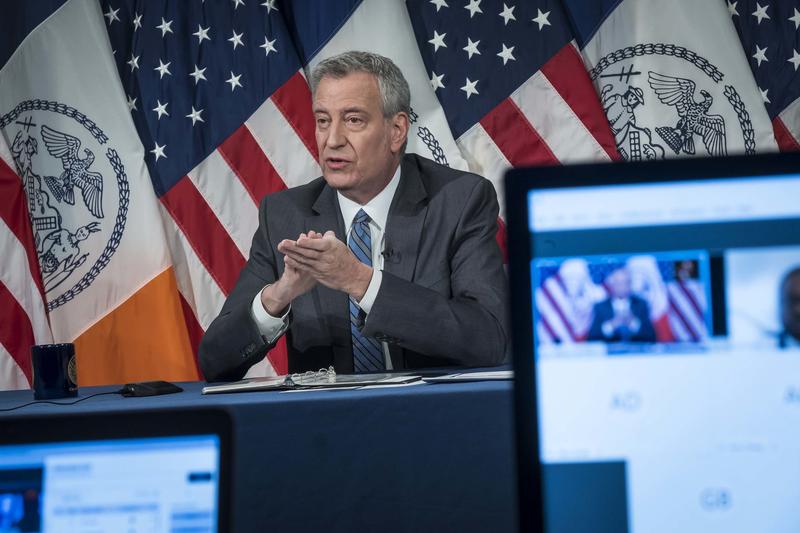
Since the subway shutdown started last week, Mayor de Blasio has touted his administration’s success in getting hundreds of homeless people out of the system and into shelters. But few of those people seem to be staying the night.
“Something historic is happening,” the mayor said on Monday. “Something really groundbreaking is happening here. Something very different and very powerful."
Since last Wednesday, homeless New Yorkers who sleep on the subway have had to leave the system at 1 a.m. Outreach workers have been engaging the homeless in terminal stations and encouraging them to go to shelters.
The mayor said the efforts have produced “amazing” results, with more than 800 people agreeing to go to shelters during the first five nights of the shutdown
But the city’s official count of single adults in the shelter system has risen far less since the subway shutdowns began. Last Monday, May 4th, the Department of Homeless Services Homeless Shelter Census recorded 17,230 single adults; that number rose just 170 as of this Sunday, even counting a slight increase in the population in safe havens, which are less restrictive than traditional shelters.
Josh Dean, executive director of Human.nyc, an advocacy group that works with the street homeless, said the numbers reflect what he’s seen happening. He spent a few hours on early Friday morning in front of the intake center for single men in midtown Manhattan. He said at least a dozen men got off the buses that came from subway terminals but didn’t end up spending the night in the shelter.
“Many people didn't even walk in,” he said. “Some people went inside and came back out within a matter of minutes. Sometimes they were in there for maybe half an hour or an hour.”
Many homeless New Yorkers consider the 30th Street shelter, the largest in the city, to be unsafe, particularly during the COVID-19 outbreak.
“Couple of guys were planning to go to Port Authority,” Dean said. “Couple of guys were planning to sleep out in the street somewhere and a couple didn't quite know where they were going.”
City officials admit that “accepting shelter” is not the same thing as actually spending the night in the shelter, but they said that even taking a referral is important.
“Someone who accepts a referral to a shelter placement may have second thoughts or may not be ready to do so when they get there – but accepting that referral and getting there is a first step,” said Isaac McGinn, spokesman for the Department of Social Services.
